Your guide to understanding how roll works on artificial turf.
The Physics of Golf
Physics. It affects everything in life, especially the beloved game of golf.
Physics, the nature and properties of matter and energy: the striking of the ball, the ball’s trajectory in the air, its initial bounce, and the concluding roll out.
Ideally, the ground in the direction of the shot would be perfectly flat, perfectly uphill, or perfectly downhill would be perfectly flat, perfectly uphill, or perfectly downhill in the direction of the shot. This would make targeting the ball into the hole a simple matter and hitting it along a straight line.
At times, however, you’ll observe that the ground is sloped. Now the ball trajectory can’t be a straight path to enter the hole, therefore it’s a more challenging task. The ball now must follow a particular curved path to enter the hole. The amount the ball has to curve to the right or left depends on the amount of the putting green’s slope and undulation.
Whether or not synthetic grass or natural turf is used to your dream backyard putting green, the physical characteristics of the putting surface factor into the performance. Southwest Greens East Bay uses a combination of typically used golf course tests and proprietary playability testing.
One common test for ball roll is the stimpmeter test. Stimp testing calculates the distance a ball rolls on artificial turf in meters when it’s released from one meter. The ball-to-surface interaction of the grass is directly correlated to the ball roll distance.
The proprietary playability testing for roll analyzes the consistency of standard putting stroke outputs. The test analyzes the initial bounce of the club face and the spin to roll transition.
Let us take a closer look at the items that impact how a golf ball reacts and rolls on a turf.
Green Characteristics
Product Construction: Extruded, recycled plastics that available in a mix of constructions, colors, and lengths. Proper construction is vital in enabling key putting green installation practices; construction enables turf to be infilled and rolled. Properly rolled fibers look and play like natural greens.
Pile Height: How thick and tall the grass blades are will provide differences in friction; impacting the velocity and smoothness of the putt.
Fiber: The fiber composition will have a substantial effect on how the golf ball will roll throughout the putt. Friction and pile lay are affected by fiber composition. How the turf lays will impact how the ball interacts with the surface.
Infill: Essential to the turf system, infill is made of rounded washed silica. Infill allows ballast and improves drainage. Infill shape is directly related to performance; angles and edges impede roll.
Aggregate Base: Stone is compacted to create challenging slopes and undulations; the result performs and drains like a championship golf course.
The recipe to creating a Backyard Putting Green that performs like a Championship Golf Green is combining the optimal raw materials with elite-proven-tested installation techniques. Very important when you’re on the putting green attempting to gently get the ball into the hole.
The Southwest Greens Difference
Southwest Greens has been able to quantify key performance indicators. By understanding what variables affect performance, we’re able to replicate natural greens.
With Golden Bear Turf, you will enjoy smoother rolls that compare to playing on your favorite championship course. Scientifically developed and tested to reproduce natural grass, from the initial bounce off the clubface... to the spin transition… to the smooth ball roll into the cup...
Golden Bear give you only the best! It is the best backyard practice putting green that will offer the most realistic putting surfaces you’ll find on the market.
